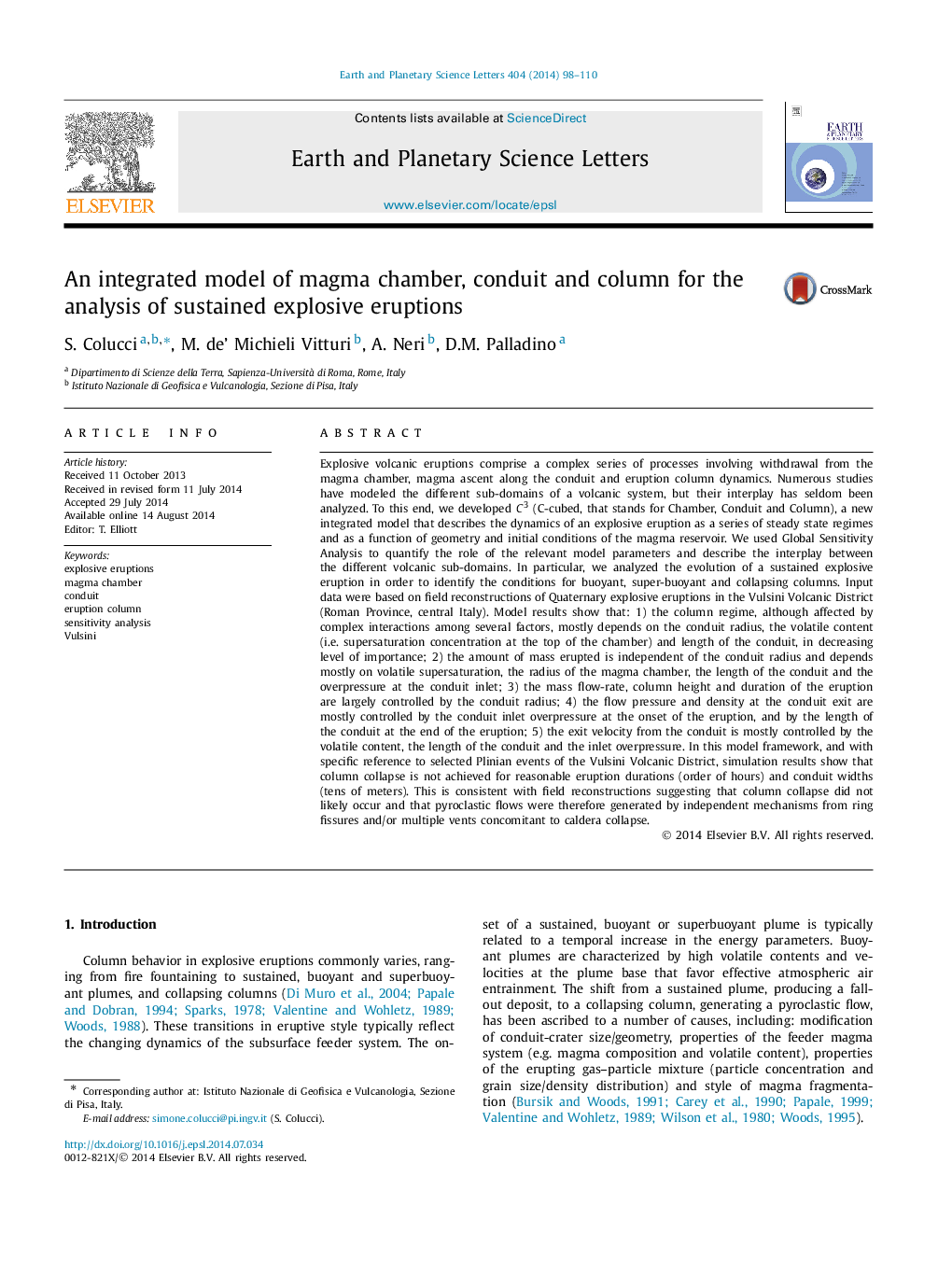| کد مقاله | کد نشریه | سال انتشار | مقاله انگلیسی | نسخه تمام متن |
|---|---|---|---|---|
| 6429005 | 1634752 | 2014 | 13 صفحه PDF | دانلود رایگان |
- We present a newly developed code, C3 (C-cubed) of the entire volcanic system.
- We analyze the model's sensitivity to the different system input parameters.
- We present an application to explosive eruptions of the Vulsini Volcanic District.
- Results show that column collapse is not achieved for reasonable conditions.
Explosive volcanic eruptions comprise a complex series of processes involving withdrawal from the magma chamber, magma ascent along the conduit and eruption column dynamics. Numerous studies have modeled the different sub-domains of a volcanic system, but their interplay has seldom been analyzed. To this end, we developed C3 (C-cubed, that stands for Chamber, Conduit and Column), a new integrated model that describes the dynamics of an explosive eruption as a series of steady state regimes and as a function of geometry and initial conditions of the magma reservoir. We used Global Sensitivity Analysis to quantify the role of the relevant model parameters and describe the interplay between the different volcanic sub-domains. In particular, we analyzed the evolution of a sustained explosive eruption in order to identify the conditions for buoyant, super-buoyant and collapsing columns. Input data were based on field reconstructions of Quaternary explosive eruptions in the Vulsini Volcanic District (Roman Province, central Italy). Model results show that: 1) the column regime, although affected by complex interactions among several factors, mostly depends on the conduit radius, the volatile content (i.e. supersaturation concentration at the top of the chamber) and length of the conduit, in decreasing level of importance; 2) the amount of mass erupted is independent of the conduit radius and depends mostly on volatile supersaturation, the radius of the magma chamber, the length of the conduit and the overpressure at the conduit inlet; 3) the mass flow-rate, column height and duration of the eruption are largely controlled by the conduit radius; 4) the flow pressure and density at the conduit exit are mostly controlled by the conduit inlet overpressure at the onset of the eruption, and by the length of the conduit at the end of the eruption; 5) the exit velocity from the conduit is mostly controlled by the volatile content, the length of the conduit and the inlet overpressure. In this model framework, and with specific reference to selected Plinian events of the Vulsini Volcanic District, simulation results show that column collapse is not achieved for reasonable eruption durations (order of hours) and conduit widths (tens of meters). This is consistent with field reconstructions suggesting that column collapse did not likely occur and that pyroclastic flows were therefore generated by independent mechanisms from ring fissures and/or multiple vents concomitant to caldera collapse.
Journal: Earth and Planetary Science Letters - Volume 404, 15 October 2014, Pages 98-110
